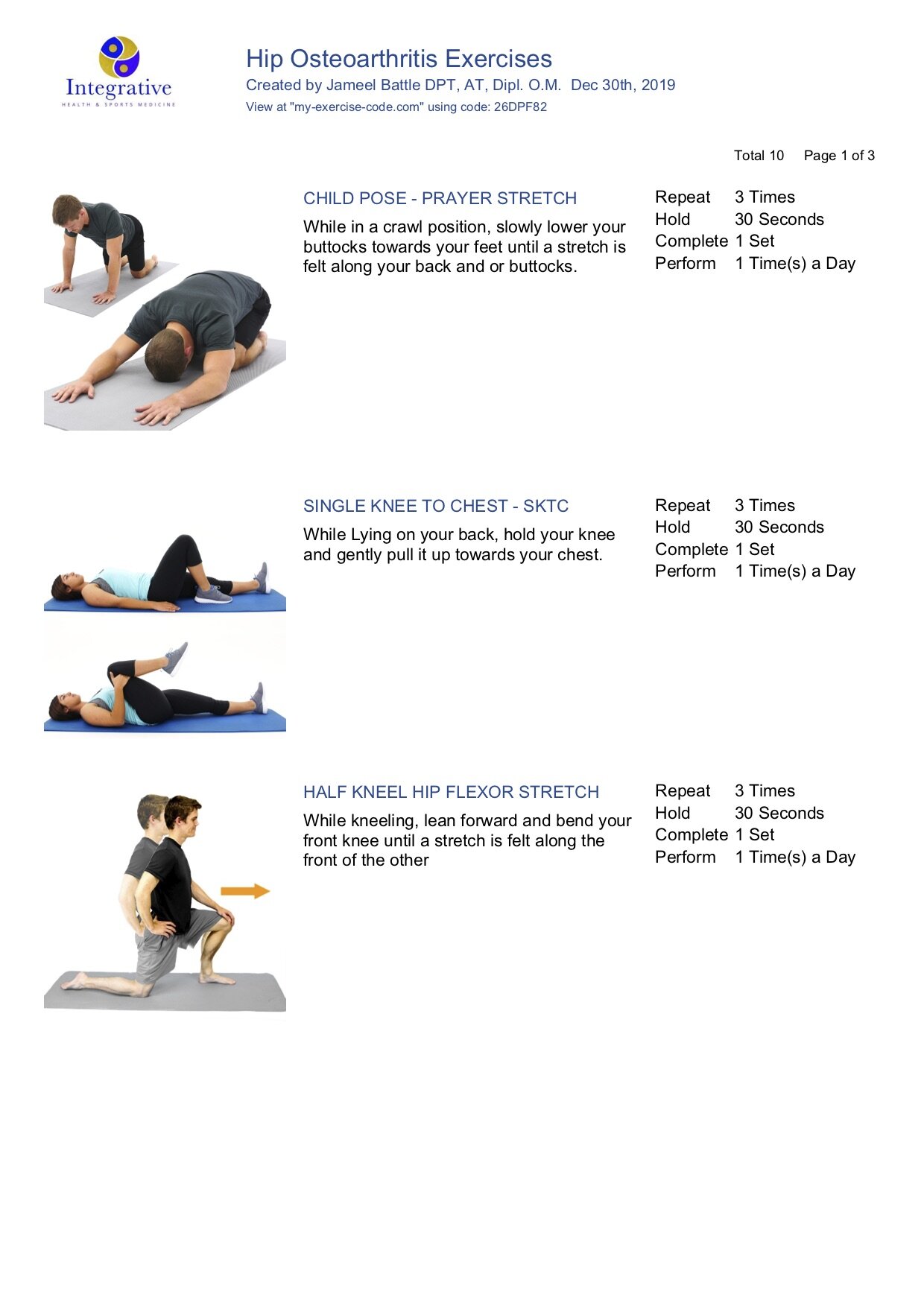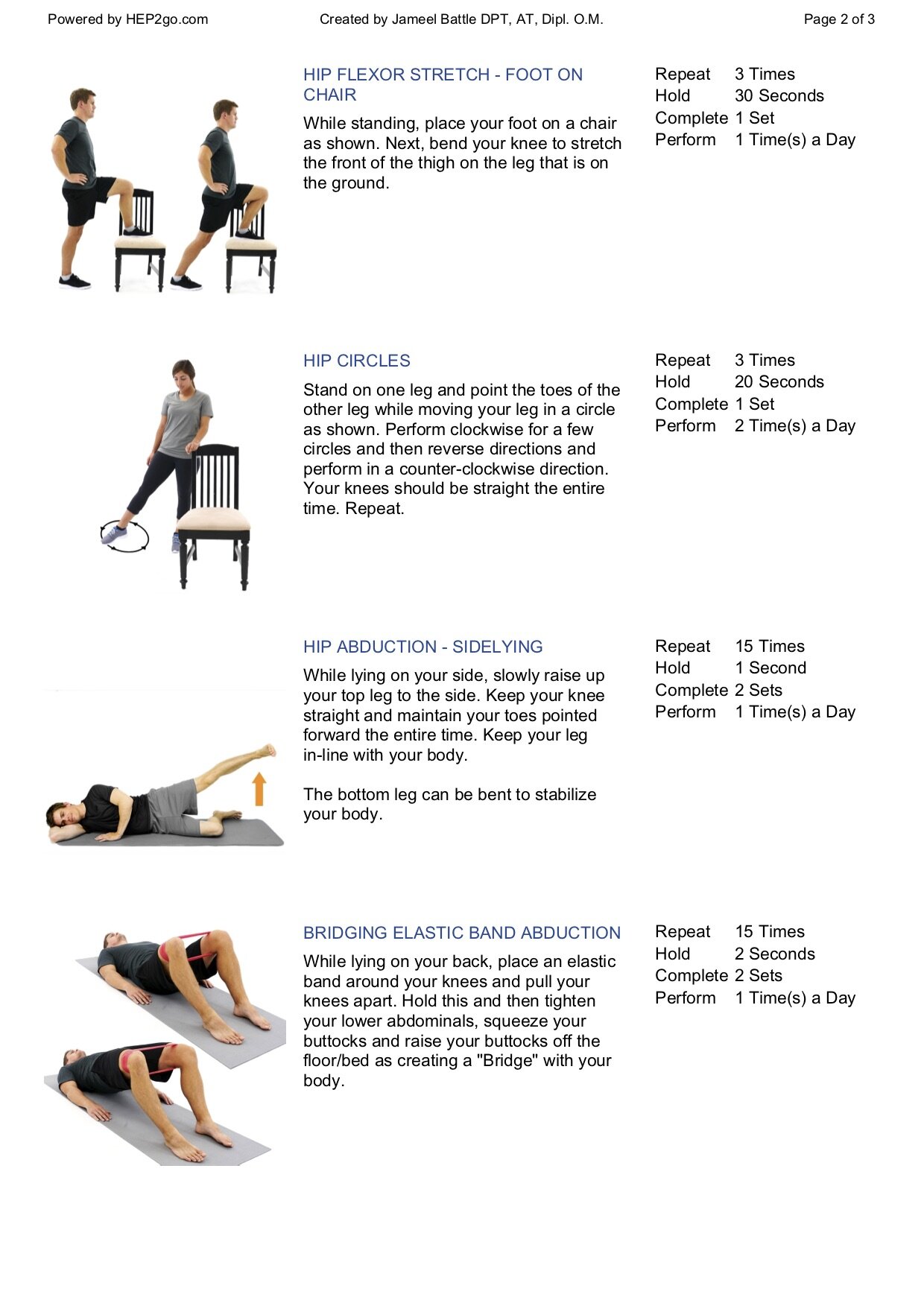HEP: Hip Osteoarthritis
Patient Education
What’s going on?
Stiffness or lack of movement may occur in the hip joint as we age.
This is usually precipitated by long-term wear and tear or trauma.
In response to either causes your muscles will tighten up to protect your hip joint, they may also become weak over time.
This will cause further stiffness and an increase in difficulty to move these joints.
Symptoms include pain and difficulty when trying to bend or straighten your hip.
How long will it take?
Depending on the severity and chronicity, as well as participation with activity modification and home exercise program, this condition usually takes about 5-6 weeks to demonstrate significant improvement.
How will we treat your condition at IHSM?
At IHSM, a doctor of physical therapy will perform a detailed physical examination to determine what specific tissues, joints, and muscles responsible for your hip stiffness. Based on the findings, your therapist will design a specific treatment plan to ensure an optimal recovery.
Treatments often include hands-on work by your physical therapist to mobilize and stretch the tight joints and muscles.
An exercise and stretching program will be designed to increase the flexibility of your hip.
Exercises to strengthen the hip musculature and high repetition (minimal weight-bearing) active range of motion exercises for the hip and knee regions (including quadruped rock backs) will be taught to restore strength with mobility to the hip.
Modalities such as acupuncture, ice, infrared heat or electrical stimulation may also be used to control the pain or inflammation.
What can you do to help yourself?
In the irritable stages when it is very painful, take some weight off the limb using crutches or a cane.
Gently keep the leg moving (pendulum exercises) on an hour-by-hour basis.
Adherence to your home exercise program is essential to ensure an optimal recovery.
Minimal weight-bearing cardiovascular exercise like recumbent cycling or aquatic therapy should be integrated into your lifestyle on a daily basis.
Attempt to reproduce stretching sensations that you have experienced during therapy.
You may apply ice or heat pack to your hip to increase decrease pain and increase blood flow.
Refrain from performing activities that exacerbate the pain.
Instructions:
You may do all of these exercises right away.
About IHSM
Integrative Health and Sports Medicine, LLC is a one-stop health and wellness center. Our mission is to restore our patients to a healthy, pain-free, and productive life. By combining orthopedic physical therapy techniques, sports medicine, acupuncture, and Chinese medicine, we can treat conditions and achieve results in cases that have not responded well to modern Western medicine.
We are located in Cincinnati, Ohio. Please email us at info@ihsm.org to schedule a consultation and let us help you on your journey to optimal health.



